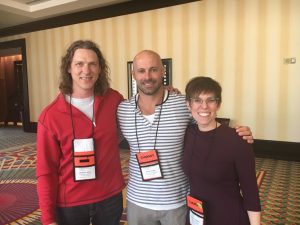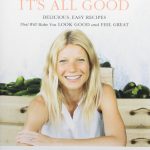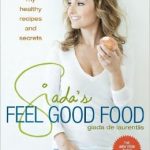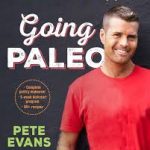5 Things to Know About the Latest in Health
Lindsey here. Last week, I was a guest speaker at the International Association of Culinary Professionals Conference in Lousiville, Kentucky. Next week, I’ll be back to share how we intertwined Manna’s work with nationwide hunger-fighting efforts.
At IACP, I had the opportunity to learn about the latest in health, eating, and feeding from professionals all over the globe.
Here are five fascinating takeaways from the pros
one: White flour has the nutritional value of a Q-tip.
I am always seeking a clear way to teach our families about the nutrition (or lack of) in white flour. Unfortunately, cookies, cakes, crackers, white bread, pretzels, etc. are cheap and abundant. If we’re looking to fuel our bodies for energy, focus, and wellness, white flour has little to contribute. I love this easy phrase!
two: Hunger is not a production issue. It’s economic, political, and infrastructure.
This was uttered by a grain farmer at a workshop called “Can Heritage Grains Actually Feed the World?” Of course, this question does not have a straightforward yes or no answer. However, this statement is a powerful reminder of how much capability, and responsibility, we have to feed our neighbors. By which I mean nourish our neighbors, not bombard vulnerable families with excess bakery leftovers (see number one, above).
three: Health should be more contagious than disease.
Dr. Peter Swanz, a physician and Doctor of Naturopathy, had much to share about the hottest words in food (epigenetics, nutrigenetics and the microbiome). While there were a lot of multi-syllabic science terms, health still comes down to some important basics. Dr. Swanz said: Nutrition is only one piece of our health. Make sleep, exercise, and drinking filtered water priorities, too. Exercise actually increases healthy bacteria in the gut.
four: Beware of the “Eat like me, look like me” trend.
One of the most engaging workshops was about navigating nutrition on the web. Consumers are distrusting experts more and more, and research shows the public views their peers equally credible when it comes to health advice. Pete Evans, pictured here, actually had a book recalled because the Paleo food he recommended for infants was in fact lethal advice! How to spot red flags when you’re reading a health headline: is it published? is it too good to be true? is it heavy on testimonials? is there only one study to support the statement? Here is a great watchdog website to handle all those health headlines.
five: We are only 1% human.
You read that right. Our bodies are comprised of ten times more microbial cells than our own human cells. There are approximately 100 times more bacterial genes playing a role in your life than there are human genes. We are 99% bacteria! Here’s the take-home message from the latest research: to increase your microbiome diversity, nuts, fruits, vegetables, and exercise made the most difference. Organically grown or not, replacing processed food with any vegetables is the most important step.
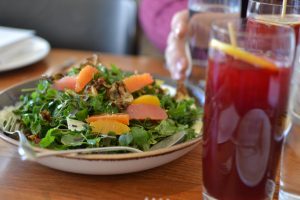
Veggies come in all colors and flavors. This kale and citrus winter salad was my first meal in Kentucky–considered myself lucky!
Come back to the blog next week to see Manna’s good work represented in Louisville.

